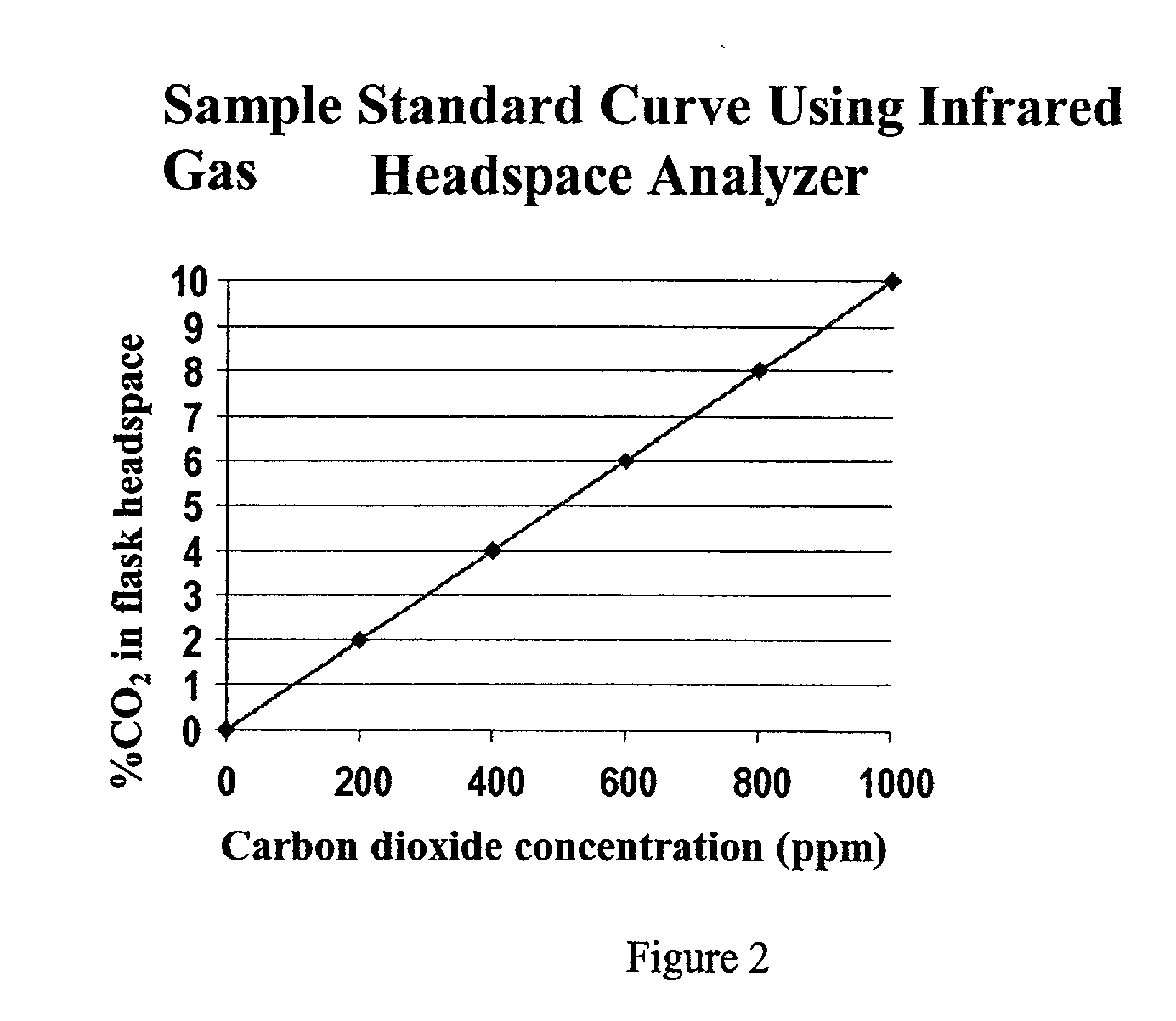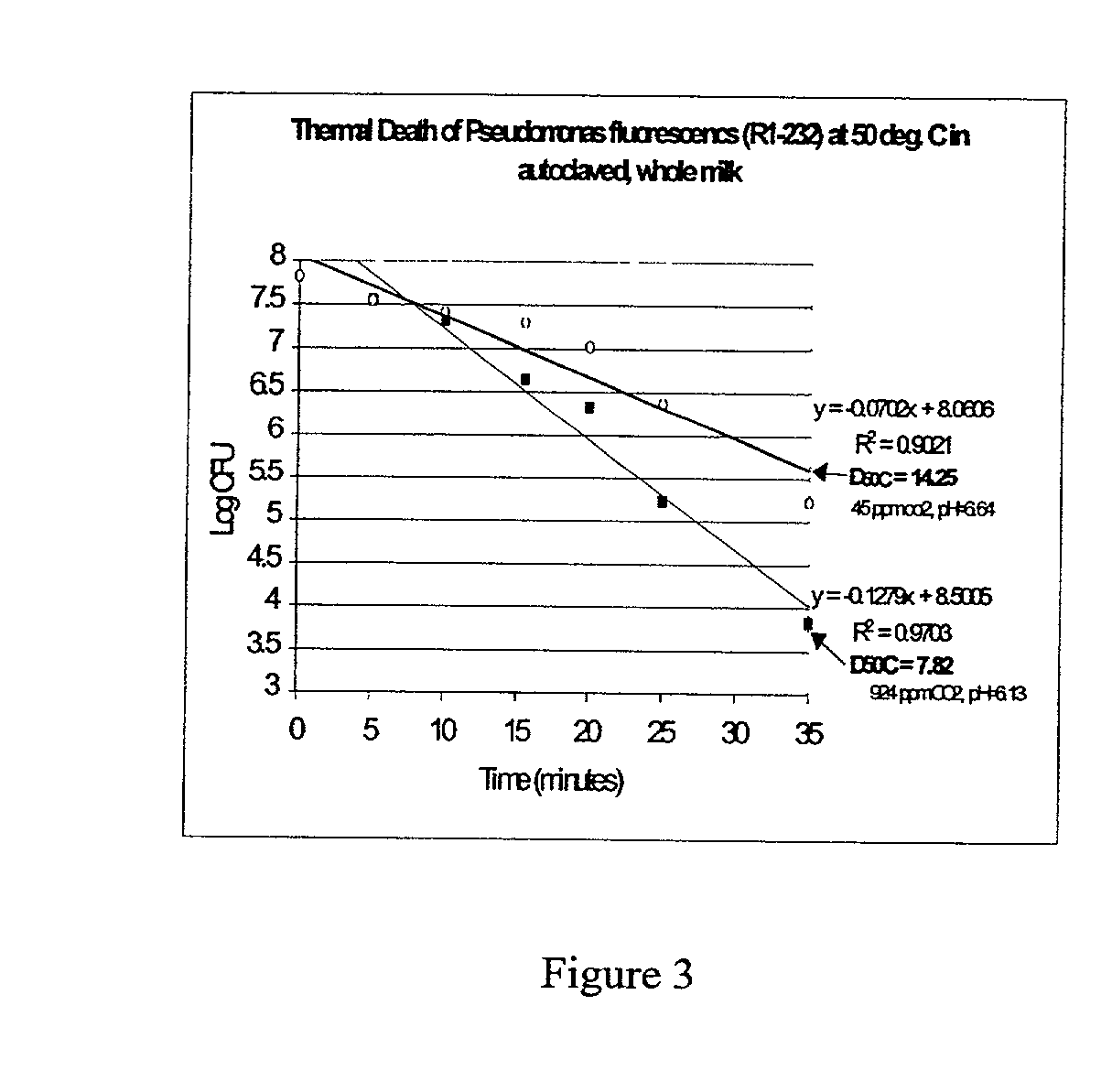Carbon dioxide as an aid in pasteurization
a technology of carbon dioxide and pasteurization, which is applied in the field of carbon dioxide as an aid in pasteurization, can solve the problems of increasing the thermal death of microorganisms, reducing the flavor quality of cooked milk, and reducing the yield of cheese subsequently prepared, so as to prolong the shelf life of yogurt and improve the keeping quality of raw milk. , the effect of prolonging the yield of chees
- Summary
- Abstract
- Description
- Claims
- Application Information
AI Technical Summary
Benefits of technology
Problems solved by technology
Method used
Image
Examples
examples
[0051] This experiment was conducted to determine whether low levels of dissolved CO.sub.2 significantly affected the thermal destruction of a common milk spoilage organism. The capillary tube method was used (Michalski et al., 1999) to construct thermal death time curves for Pseudomonas fluorescens R1-232 (isolated from milk) in sterile milk containing dissolved CO.sub.2 at 660 to 1580 ppm.
[0052] A. Materials and Methods
[0053] 1. Culture Preparation
[0054] The Food Safety and Milk Quality lab at Cornell University provided a milk isolate of Pseudomonas fluorescens R1-232. It was characterized by Biolog and API Zone (for substrate utilization) tests and was positive for protease, lipase, and lecithinase activity. Species and genus were confirmed by ribotyping.
[0055] A single colony of Pseudomonas fluorescens R1-232 was streaked onto a trypticase soy agar (TSA; BBL, Becton, Dickinson, and Company, Maryland, U.S.A.) plate and incubated (VWR, 1530 Incubator, Shel-Lab, Cornelius, Oreg.) ...
PUM
 Login to View More
Login to View More Abstract
Description
Claims
Application Information
 Login to View More
Login to View More - R&D
- Intellectual Property
- Life Sciences
- Materials
- Tech Scout
- Unparalleled Data Quality
- Higher Quality Content
- 60% Fewer Hallucinations
Browse by: Latest US Patents, China's latest patents, Technical Efficacy Thesaurus, Application Domain, Technology Topic, Popular Technical Reports.
© 2025 PatSnap. All rights reserved.Legal|Privacy policy|Modern Slavery Act Transparency Statement|Sitemap|About US| Contact US: help@patsnap.com



